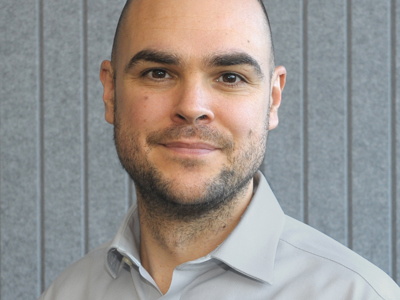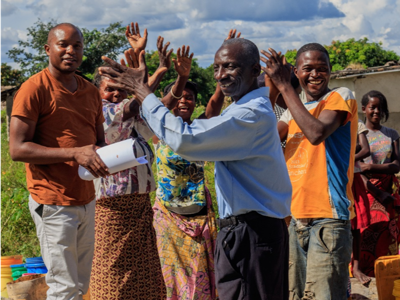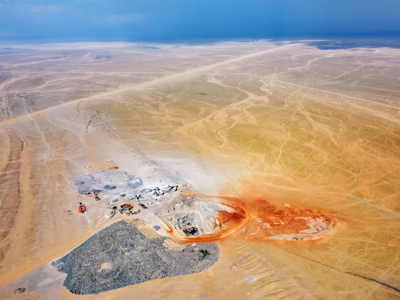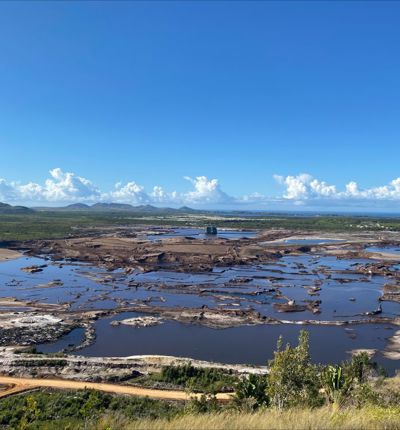
Rural villagers living near mine in Madagascar take legal action against mining giant Rio Tinto after tests show dangerous levels of lead in their bodies
A group of rural villagers from Madagascar have launched a legal claim against the UK/Australian mining company Rio Tinto over claims pollution from a nearby mine has caused them to ingest dangerous levels of uranium and lead.
Posted on 03 April 2024
The 64 residents of the Anosy region in southern Madagascar say the QIT Minerals Madagascar (QMM) mine in Fort Dauphin, which is 80% owned by Rio Tinto, has contaminated surrounding lakes and waterways with the toxic metals. Up to 15,000 people in the area rely on these water sources for their drinking and domestic water supply.
Blood tests carried out on members of the communities in the area around Fort Dauphin have shown elevated levels of lead in their bodies that exceed World Health Organisation thresholds beyond which medical care is recommended. One individual has such high levels of lead that they require a medical process called chelation therapy to remove it from their bloodstream. The villagers cannot afford the medical care that they now need.
Lead is especially harmful to young children, causing permanent brain damage that can lead to a range of cognitive and behavioural disorders. Exposure to uranium can damage the body’s development, particularly in children and pregnant women, as well as increasing cancer rates and damaging kidney function.
The QMM mine produces ilmenite, which is used to manufacture titanium dioxide, a white pigment used in paints, food, cosmetics, and other items. The mine extracts ilmenite from the sands along the edge of Lakes Besaroy and Ambavarano. Independent studies have shown that mine wastewater containing high levels of uranium and lead has been discharged into the surrounding environment.
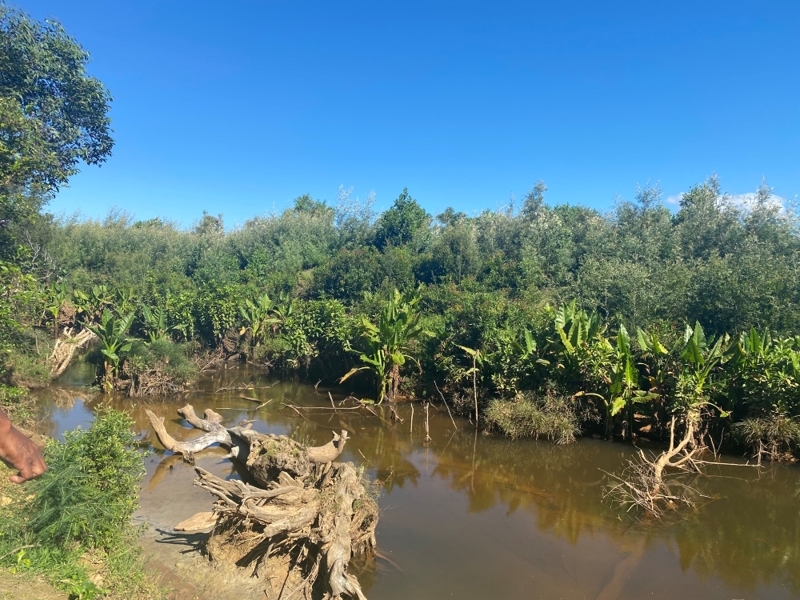
Lawyers from the law firm Leigh Day, who are bringing the legal claim on behalf of the residents, say their clients have suffered loss and damage as a result of the pollution caused by the mine’s operations.
The villagers rely on local waterways for all of their domestic needs, such as drinking, washing clothes, fishing and cooking. They, and their families, regularly draw water from waterways that are alleged to be contaminated by the operations of the QMM mine.
In a letter of claim sent to Rio Tinto’s London HQ on Tuesday 2 April 2024, Leigh Day says that those people affected by the lead and uranium pollution now urgently need ongoing monitoring of the lead levels in their blood and medical care for high-risk groups such as children and women of child-bearing age.
Leigh Day is not revealing the identities of its clients at this stage because of the risk of reprisals. There have been concerns that people in the region have been afraid to speak out about issues such as water quality. In recent years there have been several protests during which people protesting against QMM were arrested and fined. There have also been claims more recently that local residents were being coerced and intimidated to enter into agreements with QMM.
Rio Tinto disputes the claims that the QMM mine has polluted water bodies in the area, citing evidence that the water contains low levels of uranium. The company says its water management systems ensure that QMM’s activities do not increase the exposure of local communities to radiological hazards or other contaminants.
The Anosy region in southern Madagascar is one of the most ecologically diverse regions in the country, with a population of approximately 500,000 people. The south of Madagascar has particularly high rates of poverty, deepening food insecurity and water scarcity.
The residents are being represented by Leigh Day partner Paul Dowling, who expects the number of claimants to increase significantly as the legal action gets under way.
Leigh Day partner Paul Dowling said:
“Whilst Rio Tinto extracts large profits from its mining operations in Madagascar, local families are being forced to consume water contaminated with harmful heavy metals. In bringing this case, our clients are seeking accountability and justice for the damage that has been caused to their local environment and their health.
“Rio Tinto continues to make bold public commitments about safeguarding vital water sources and respecting the rights of those affected by its operations around the world. We trust the company will now stand behind those commitments and engage constructively with our clients’ claims at an early stage to ensure these communities no longer have to rely on polluted water and can get the medical attention they need.”
A French translation of the release is available here
French version
Des villageois vivant près d'une mine à Madagascar intentent une action en justice contre le géant minier Rio Tinto après que des tests ont révélé des niveaux dangereux de plomb dans leur organisme.
Un groupe de villageois malgaches a intenté une action en justice contre la société minière anglo-australienne Rio Tinto, au motif que la pollution provenant d'une mine voisine leur aurait fait ingérer des niveaux dangereux d'uranium et de plomb.
Les 64 habitants de la région d'Anosy, dans le sud de Madagascar, affirment que la mine QIT Minerals Madagascar (QMM) de Fort Dauphin, détenue à 80 % par Rio Tinto, a contaminé les lacs et les cours d'eau environnants avec des métaux toxiques. Jusqu'à 15 000 personnes dans la région dépendent de ces sources d'eau pour leur approvisionnement en eau potable et domestique.
Des analyses de sang effectuées sur des membres des communautés de la région de Fort Dauphin ont révélé des niveaux élevés de plomb dans leur organisme, dépassant les seuils de l'Organisation mondiale de la Santé au-delà desquels des soins médicaux sont recommandés. Une personne présente des niveaux de plomb si élevés qu'elle a besoin d'un processus médical appelé thérapie par chélation pour l'éliminer de son système sanguin. Les villageois n'ont pas les moyens de payer les soins médicaux dont ils ont maintenant besoin.
Le plomb est particulièrement nocif pour les jeunes enfants, car il provoque des lésions cérébrales permanentes qui peuvent entraîner toute une série de troubles cognitifs et comportementaux. L'exposition à l'uranium peut nuire au développement de l'organisme, en particulier chez les enfants et les femmes enceintes, ainsi qu'augmenter les taux de cancer et endommager les fonctions rénales.
La mine QMM produit de l'ilménite, qui sert à fabriquer du dioxyde de titane, un pigment blanc utilisé dans les peintures, les aliments, les cosmétiques et d'autres articles. La mine extrait l'ilménite des sables situés en bordure des lacs Besaroy et Ambavarano. Des études indépendantes ont montré que les eaux usées de la mine, contenant des niveaux élevés d'uranium et de plomb, ont été déversées dans l'environnement.

Les avocats du cabinet Leigh Day, qui ont déposé la plainte au nom des résidents, affirment que leurs clients ont subi des pertes et des dommages en raison de la pollution causée par les activités de la mine.
Les villageois dépendent des cours d'eau locaux pour tous leurs besoins domestiques, tels que la boisson, la lessive, la pêche et la cuisine. Eux et leurs familles puisent régulièrement de l'eau dans des cours d'eau qui seraient contaminés par les activités de la mine QMM.
Dans une lettre de réclamation envoyée au siège de Rio Tinto à Londres le mardi 2 avril 2024, Leigh Day affirme que les personnes touchées par la pollution au plomb et à l'uranium ont maintenant besoin de toute urgence d'un suivi continu des niveaux de plomb dans leur sang et de soins médicaux pour les groupes à haut risque tels que les enfants et les femmes en âge de procréer.
Leigh Day ne révèle pas l'identité de ses clients à ce stade en raison du risque de représailles. Certains craignent que les habitants de la région n'osent pas s'exprimer sur des questions telles que la qualité de l'eau. Ces dernières années, plusieurs manifestations ont eu lieu au cours desquelles des personnes protestant contre QMM ont été arrêtées et condamnées à des amendes. Plus récemment, certains ont affirmé que des résidents locaux avaient été contraints et intimidés afin qu'ils concluent des accords avec QMM.
Rio Tinto conteste les affirmations selon lesquelles la mine QMM a pollué les masses d'eau de la région, citant des preuves que l'eau contient de faibles niveaux d'uranium. La société affirme que ses systèmes de gestion de l'eau garantissent que les activités de QMM n'augmentent pas l'exposition des communautés locales aux risques radiologiques ou à d'autres contaminants.
La région de l'Anosy, dans le sud de Madagascar, est l'une des régions les plus écologiquement diversifiées du pays, avec une population d'environ 500 000 personnes. Le sud de Madagascar connaît des taux de pauvreté particulièrement élevés, une insécurité alimentaire croissante et une pénurie d'eau.
Les résidents sont représentés par Paul Dowling, associé de Leigh Day, qui s'attend à ce que le nombre de plaignants augmente de manière significative au fur et à mesure que l'action en justice se met en place.
Paul Dowling, associé du cabinet Leigh Day, a déclaré :
“Alors que Rio Tinto tire d'importants bénéfices de ses activités minières à Madagascar, les familles locales sont contraintes de consommer de l'eau contaminée par des métaux lourds nocifs. En intentant cette action, nos clients cherchent à obtenir des comptes et la justice pour les dommages causés à leur environnement local et à leur santé.”
“Rio Tinto continue de prendre des engagements publics audacieux concernant la protection des sources d'eau vitales et le respect des droits des personnes affectées par ses activités dans le monde entier. Nous sommes convaincus que l'entreprise soutiendra désormais ces engagements es'engagera de manière constructive dans les réclamations de nos clients à un stade précoce afin que ces communautés n'aient plus à dépendre d'une eau polluée et qu'elles puissent recevoir les soins médicaux dont elles ont besoin.”
Malagasy version
Nitory ny orinasa mpitrandraka lehibe Rio Tinto ny mponina an-tanàna ambanivohitra atỳ Madagasikara monina akaikina toeram-pitrandrahana, rehefa avy nasehon’ny fitiliana ny taham piraka mampidi-doza ao anatin’ny vatan’izy ireo
Nisy mponina an-tanàna ambanivohitra maromaro avy atỳ Madagasikara nitory ny orinasa mpitrandraka anglisy/aostraliana Rio Tinto noho ny fandotoana ny tontolo iainana amina toeram pitrandrahana eo akaiky eo izay nahatonga azy ireo hitelina uranium sy firaka amina taha mampidi-doza.
Ny mponina 64 ao amin’ny faritra Anosy any atsimon’i Madagasikara dia milaza fa ny toeram-pitrandrahana QIT Minerals Madagascar (QMM) any Fort Dauphin, izay an’ny Rio Tinto 80%, dia nandoto ny farihy sy renirano manodidina tamina metaly misy poizina. Olona hatramin’ny 15 000 no miankina amin’ireny loharano ireny amin’ny famatsiana ny rano sotroina sy ampiasain’izy ireo ao an-tokantrano.
Ny fitiliana rà natao tamin’ny olona ao amin’ny vondrom-piarahamonina ao amin’ny faritra manodidina an’i Fort Dauphin dia naneho taham-piraka avo ao amin’ny vatan’izy ireo izay mihoatra ny fetra apetraky ny Fikambanana Maneran-Tany momba ny Fahasalamana, izay rehefa ihoarana dia ilàna fitsaboana. Ahitana taham-piraka avo be ny olona iray ka mitaky dingana ara pitsaboana antsoina hoe “thérapie par chélation” mba hanesorana izany ao amin’ny ràny. Ireo mponina an-tanàna kely ireo dia tsy manam-bola handoavana ny fitsaboana ilain’izy ireo amin’izao.
Ny firaka dia manimba manokana ny ankizy madinika, mahatonga fahasimban’ny atidoha mandrakizay izay mety hitarika aretina ara-tsaina na ara-pihetsika be dia be. Ny tsy fananana fiarovana amin’ny uranium dia mety hanimba ny fivoaran’ny vatana, indrindra fa ho an’ny ankizy sy ny vehivavy mitondra vohoka, mampakatra ny tahan’ny homamiadana sy manimba ny fiasan’ny voa ihany koa.
Ny toeram-pitrandrahana QMM dia mamokatra ilmenita, izay ampiasaina hanamboarana dioxyde de titane, fandoko fotsy ampiasaina amin’ny loko, sakafo, makiazy ary zavatra hafa. Mitrandraka ilmenita amin’ny fasika manamorona ny Farihy Besaroy sy Ambavarano io toeram-pitrandrahana io. Ny fandinihana mahaleo tena dia naneho fa nisy rano avy nampiasain’ny toeram-pitrandrahana nariana teo amin’ny manodidina ary izany dia nahitana tahana uranium sy firaka ambony.
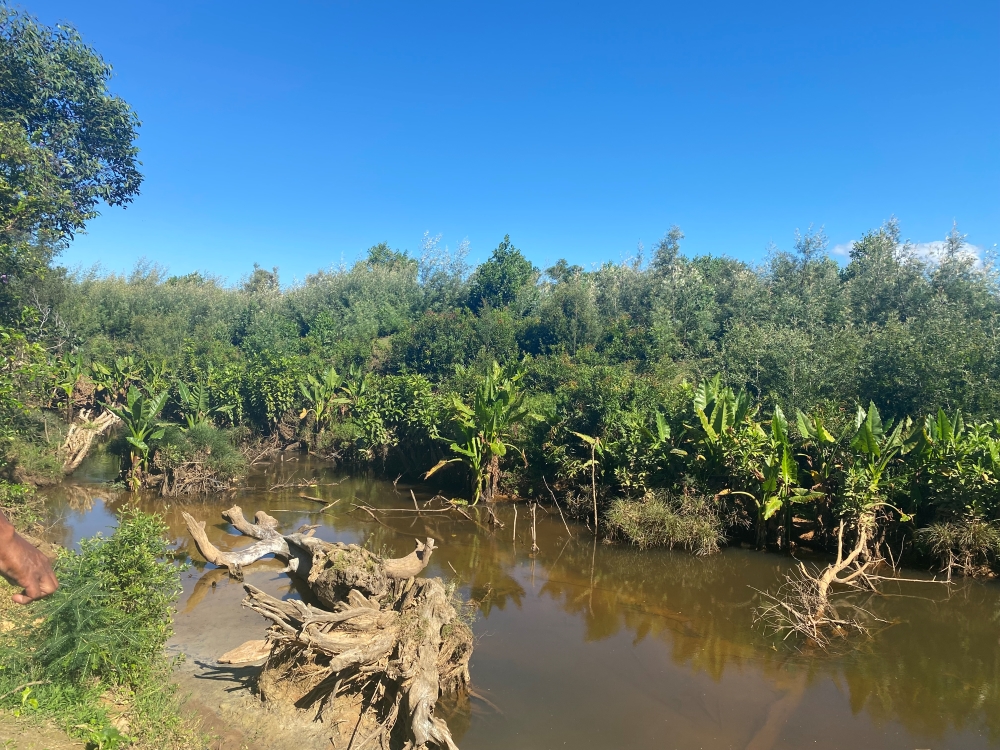
Ny mpisolovava avy amin’ny cabinet juridique Leigh Day, izay mitondra ny fitoriana amin’ny anaran’ny mponina, dia milaza fa ny mpanjifan’izy ireo dia niharam-pahavoazana vokatry ny fandotoana ateraky ny asa ataon’ny toeram-pitrandrahana.
Ny mponina ao an-tanàna dia miankina amin’ny renirano eo an-toerana amin’ny filàn’izy ireo ao an-tokantrano, toy ny rano sotroina, fanasana lamba, fanjonoana ary fandrahoana. Izy ireo sy ny ankohonan’izy ireo dia matetika no misintona rano amin’ny renirano izay voalaza fa voaloton’ny fitrandrahana izay ataon’ny toeram-pitrandrahana QMM.
Ao amin’ny taratasy fitakiana onitra nalefa tany amin’ny foiben’ny Rio Tinto any Londres tamin’ny Talata 2 aprily 2024, ny Leigh Day dia milaza fa ireo olona tratran’ny fandotoana ara piraka sy uranium ireo amin’izao fotoana izao dia mila maika fanaraha-maso mitohy ny tahan’ny firaka ao amin’ny ràn’izy ireo sy fitsaboana ho an’ireo vondron’olona tena atahorana toy ny ankizy sy ny vehivavy anatina taona fiterahana.
Noho ny mety hisian’ny valifaty, ny Leigh Day dia tsy manambara ny mombamomba ny mpanjifany amin’ity dingana ity. Misy ahiahy ka matahotra hiteny momba ny olana tahaka ny kalitaon’ny rano ny olona ao amin’ilay faritra. Tato anatin’ny taona vitsivitsy dia nisy fanoherana maro izay nisamborana sy nampandoavana lamandy ny olona nanohitra ny QMM. Nisy filazana ihany koa tato ho ato fa anaovana famoretana sy fampitahorana ny mponina eo an-toerana mba hanao fifanarahana amin’ny QMM.
Ny Rio Tinto dia manohitra ny filazana fa ny toeram-pitrandrahana QMM dia nandoto ny rano any amin’io faritra io, ka manome porofo fa ambany ny tahan’ny uranium ao amin’ny rano. Io orinasa io dia milaza fa ny rafi-pitantanan-drano ampiasainy dia manao izay hahazoana antoka fa ny zavatra ataon’ny QMM dia tsy hampakatra ny tsy fananan’ny olona eo an-toerana fiarovana amin’ny mety ho loza atera-taratra na fandotoana hafa.
Ny faritra Anosy any atsimon’i Madagasikara dia iray amin’ireo faritra manana tontolo iainana samy hafa indrindra eto amin’ny firenena, miaraka amina mponina miisa eo amin’ny 500 000 eo ho eo. Ny atsimon’i Madagasikara dia manana taha ambony manokana amin’ny fahantrana, tsy fanjarian-tsakafo mihalalina ary tsy fahampian-drano.
Ny mponina dia soloan’i Paul Dowling, mpiara-miombona antoka amin’ny Leigh Day, tena. Izy dia manantena fa hitombo be ny isan’ny mpitory satria manomboka mitranga ny fanenjehana araka ny lalàna.
Izao no nolazain’i Paul Dowling, mpiara-miombona antoka amin’ny Leigh Day:
“Mandritra ny fitrandrahan’ny Rio Tinto tombony be avy amin’ny ny asa fitrandrahana ataony at Madagasikara, ny fianakaviana eo an-toerana dia voatery misotro rano voaloto amina metaly mavesatra. Ao anatin’ny fitondrana ity raharaha ity, ny mpanjifanay dia mitaky ny andraikitra sy ny rariny amin’ny fahavoazana nihatra tamin’ny tontolo iainan’izy ireo eo an-toerana sy ny fahasalaman’izy ireo.
“Ny Rio Tinto dia manohy manao fanekena feno fahasahiana ampahibemaso momba ny fiarovana loharano iankinan’ny aina sy ny fanajana ny zon’ireo izay voakasiky ny fitrandrahana ataony manerana izao tontolo izao. Matoky izahay fa hihazona ireo fanekena ireo ny orinasa amin’izao fotoana izao ary hiditra an-tsehatra amin’ny fomba manampy amin’ny fitakian’ny mpanjifanay eo am-piandohana mba hahazoana antoka fa tsy voatery hiantehitra amina rano voaloto intsony ireo vondrom-piarahamonina ireo ary ho afaka hahazo ny fitsaboana ilain’izy ireo.”


